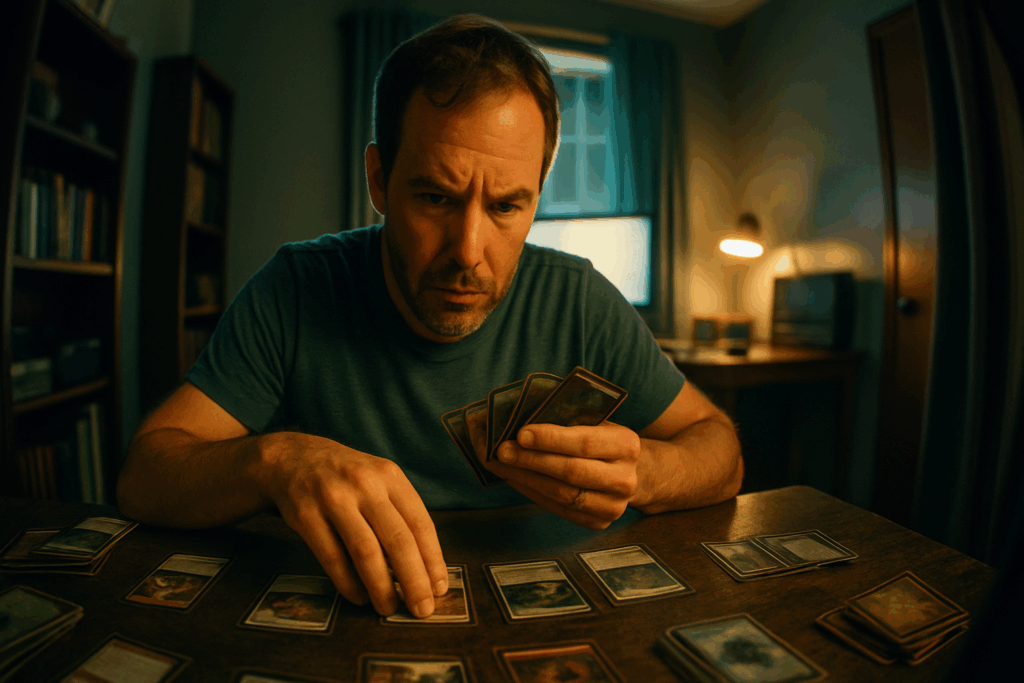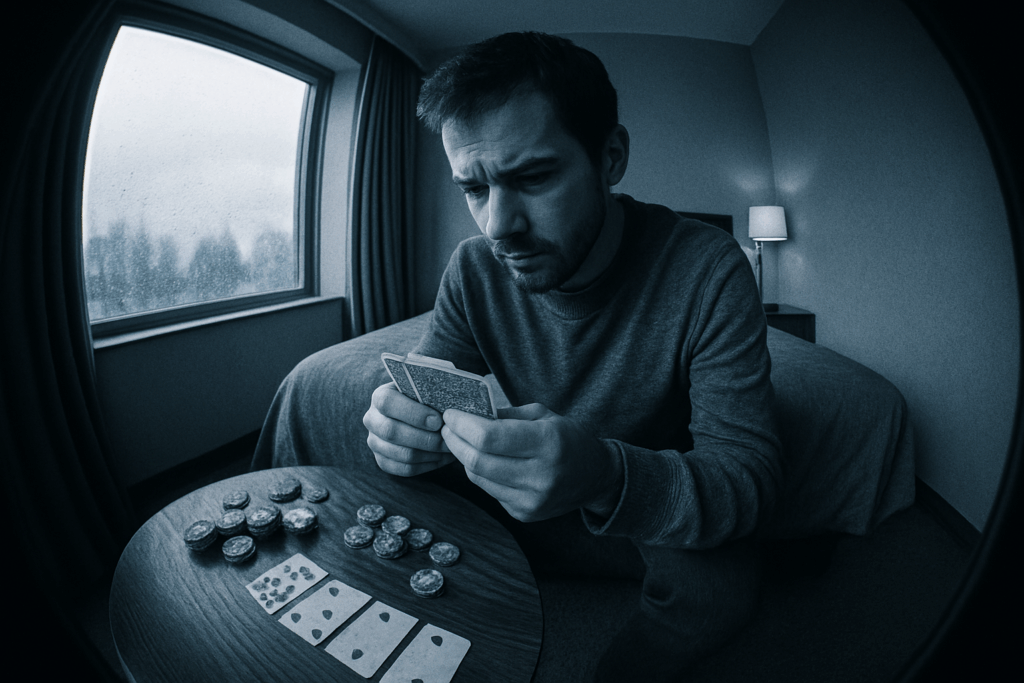What Makes Baccarat Unique
Baccarat doesn’t waste your time. Hands are dealt quickly, rules are dead simple, and decisions are minimal. You pick Banker, Player, or Tie. That’s it. No splitting, no doubling down, no piles of strategy charts needed. Just clean, fast action.
What really draws players in, though, is the house edge. The Banker bet sits around 1.06%. Player comes in close behind. Compare that to most slots or roulette and it’s clear—baccarat gives you a tighter margin to swim in. For serious players, that edge matters.
You’ll also find that veteran gamblers respect baccarat for its no-nonsense appeal. Less fluff, more game. It’s not about flashy gimmicks—it’s about percentages, pace, and knowing when to walk away. That mix of simplicity and smart odds is why baccarat keeps a strong following in both high-limit rooms and casual corners of the casino floor.
Understanding the Basics
Banker, Player, and Tie Bets Explained
Baccarat keeps things simple: three bets, and that’s it. You can bet on the Banker hand, the Player hand, or a Tie. The goal? Pick the hand that lands closest to a total of 9.
- Banker: Statistically the safest bet. Banker wins about 45.8% of the time. There’s a 5% commission on Banker wins, but the hit is worth it for the higher win rate.
- Player: Comes in just behind at around 44.6% win rate. No commission if it wins. Slightly riskier, but still solid.
- Tie: Seems tempting with its flashy 8:1 (or sometimes 9:1) payout. But it only hits around 9.6% of the time. The odds don’t justify the reward.
Payouts and Odds: Where the Value Really Is
- Banker wins: Pays 1:1 (less 5% commission)
- Player wins: Pays 1:1
- Tie: Pays 8:1 or 9:1, depending on the casino
The value sits with Banker. Even with the commission, the math works in your favor over time because of the win rate. Player bets are decent, especially if you’re rotating your bets or trying to avoid the commission. Tie looks good on paper but burns your stack fast in practice.
How House Edge Impacts Your Long-Term Play
- Banker House Edge: ~1.06%
- Player House Edge: ~1.24%
- Tie House Edge: Soars to around 14.4%
Over dozens—or hundreds—of sessions, that edge adds up. Betting on Tie long-term is like running uphill with a backpack full of bricks. Stick to Banker or Player if you want any chance of consistency. The edge won’t kill you in one or two sessions, but across months? It will.
Know your bets. Respect the math. Keep it simple, and you’ll have better control over your bankroll.
Strategy 1: Bet with the Banker
If you’re in this to win more often than you lose, the Banker bet is your best friend. The numbers don’t lie: Banker has a house edge of just 1.06%, tighter than almost anything else in a casino. That’s because Banker wins slightly more than 50% of the time over the long haul—thanks to how third-card rules work.
There’s a catch, though. Casinos aren’t giving away win rates for free. Banker bets come with a 5% commission on your winnings. That means if you win $100, you only walk away with $95. But even with that haircut, it still outpaces the Player bet when it comes to long-term value.
So when should you stick with Banker? Most pros grind with it until there’s a clear switch signal: a cold streak that’s too long to ignore or a Player run that’s clearly heating up. But jumping back and forth blindly defeats the point. Have a plan and stick to what the math favors.
Bottom line? Bet on Banker. Keep your sessions tight. Don’t chase. Let the edge do the work.
Strategy 2: Money Management Matters
Winning at baccarat isn’t just about picking the right side—it’s about surviving the ups and downs. The simplest (and hardest) edge you’ll ever have is discipline.
Start every session with a clear win and loss limit. Decide the amount you’re okay walking away with—and the amount you’re absolutely not willing to lose. And stick to it. No chasing. No doubling down out of frustration. You’re playing a probability game, not a revenge match against the cards.
When it comes to how you bet, flat betting—wagering the same amount every time—is the steadiest path. It won’t bring big wins fast, but it protects your bankroll and keeps your emotions in check. On the other hand, progression systems like Martingale or 1-3-2-6 amp up stakes hoping to capitalize on streaks. They can work—for a while—but they also burn fast if the cards go cold. Know what kind of ride you’re signing up for.
Avoiding tilt—the spiral of emotional, irrational play—is everything. Tilt kills logic. It makes you believe the next hand will fix the last one. It doesn’t. Real players win by staying sharp, not getting lucky.
Walk in with a plan, walk away on your terms. That’s the edge most players leave behind.
Strategy 3: Track Trends, But Don’t Rely on Them
Walk into any baccarat room and you’ll see players glued to roadmaps—Big Eye Boy, Bead Plate, Cockroach Pig. These charts track previous outcomes, laying out patterns, streaks, and perceived signals. The theory? Spot a trend, ride it, and cash in. The reality? Patterns are descriptive, not predictive. Baccarat has no memory. Each hand is independent, no matter what the roadmap suggests.
That doesn’t mean trend tracking is useless. It’s a tool—not a crystal ball. Observing trends can help with pacing, bet sizing, or even psychological comfort. But chasing every pattern leads to chaos: over-betting, second-guessing, and bankroll drains.
The smart play? Watch the trends, but stay disciplined. Let the data inform your awareness, not your decisions. If you’re betting the Banker, stick to it for mathematical reasons—not because you saw five reds in a row. That’s how you avoid chasing ghosts and keep your strategy tight.
Strategy 4: Don’t Bet on the Tie
The Tie bet looks seductive. An 8-to-1 payout grabs attention fast. But here’s the truth—you’re trading odds of a big score for a near-certain drain on your bankroll.
Statistically, the Tie comes up in less than 10% of hands. The house edge? A staggering 14.4%. Compare that to the Banker’s modest 1.06%. It’s not just bad—it’s brutal over time. Betting the Tie is like tossing chips into a strong headwind and hoping they fly back.
If you’re after stronger returns, stick to bets that let you stay at the table longer. Banker bets may be boring, but over hundreds of hands, they quietly grind toward profit. Mix in a disciplined money strategy and avoid flashy distractions—like Tie bets—and suddenly you’re playing a smarter game.
Want a little upside without the wreckage? Flat bet Banker with a modest side budget for tracking streaks. Build small edges, compound them, and walk away before things swing. That’s how steady baccarat players stay in the black.
Advanced Tip: Combine Short-Term Play with Smart Betting
Winning at baccarat isn’t about sitting at a table for hours chasing hot streaks. It’s about knowing when to step in—and when to step away. Short sessions are a powerful way to manage both risk and fatigue. The longer you play, the more the house edge grinds you down. Quick, focused sessions help you lock in gains and avoid the slow bleed of overplaying.
Smart players also watch streaks—not obsessively, but tactically. If the Banker is hitting consistently, ride it. If momentum shifts to Player, don’t be stubborn. Adjust. Baccarat rewards flexibility more than faith. The key is knowing that no streak lasts forever, and switching sides at the right time matters more than loyalty to a trend.
And most importantly, know when to walk. Set profit targets. Set loss limits. Stick to them. The biggest edge you have at the table isn’t a betting system—it’s your ability to stay calm and quit while you’re ahead. That’s what separates someone who plays from someone who plays smart.
Final Thoughts: Stay Sharp, Stay Strategic
Baccarat isn’t about flashy plays or chasing miracles. It rewards players who stay composed, follow a plan, and keep emotion off the table. Fast hands and short rounds might tempt you to play impulsively, but the edge goes to the disciplined. Smart bankroll control—knowing when to bet, how much, and when to stop—isn’t a bonus; it’s the baseline.
The margin between walking out even and walking out ahead is simple: discipline. Chasing losses or upping bets out of boredom is how you bleed your balance dry. Keep the sessions short, the decisions cool, and the goal in sight—profit through precision.
Want to sharpen your overall table strategy? Read: Poker Tactics: How to Improve Your Game


